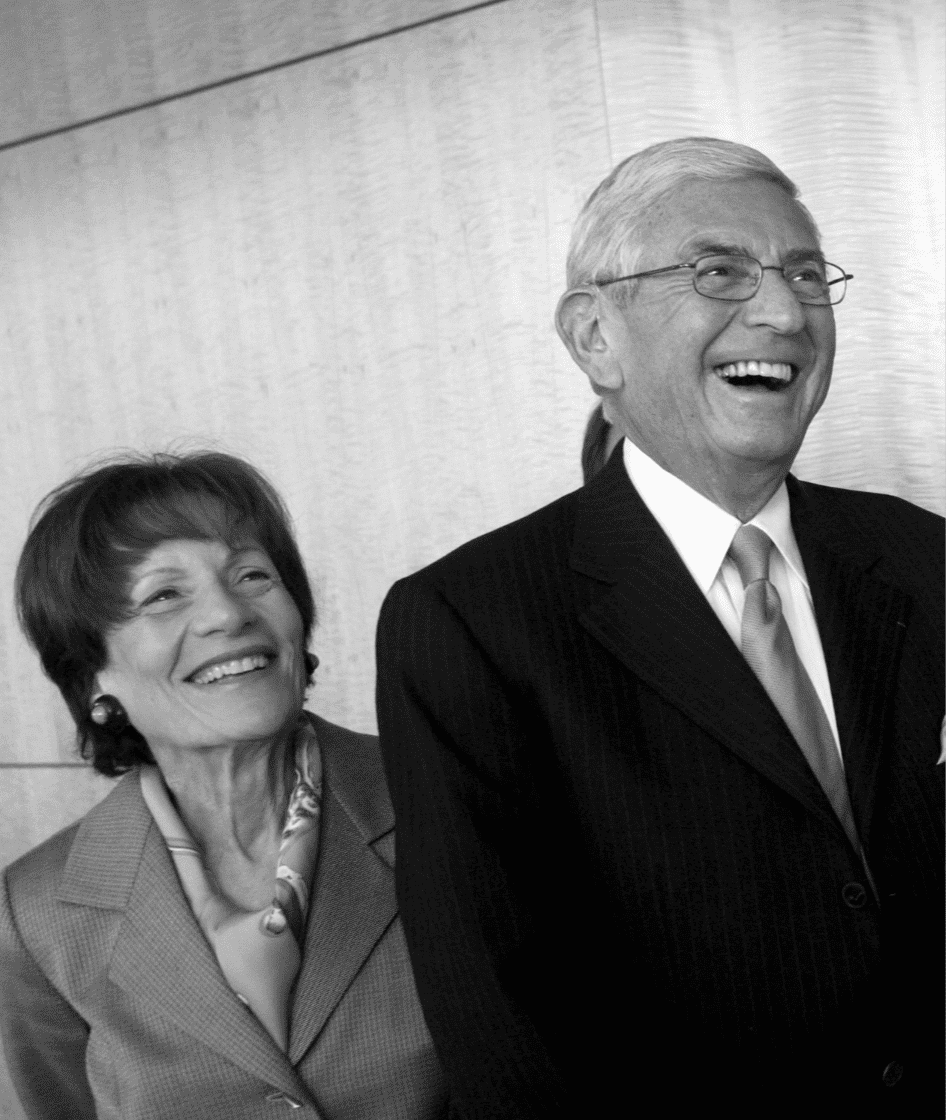Eli Broad was chronically attracted to solving problems, and he found his kindred spirit in scientists, the ultimate problem solvers. A combination of personal circumstance and curiosity brought the Broads into contact with some of the world’s most exceptional scientific minds. Not unlike Eli’s fascination with how artists interpret the world, he was enthralled with the potential of how scientists apply creativity to their process of understanding the world.
Opening of Broad InstituteMaking the World a Better Place Through Scientific and Medical Research
The Broad Foundation’s investments in science would result in the proliferation of world-class research programs, stem cell centers, the Broad Institute, the Broad Center for the Biological Centers at Caltech and groundbreaking discoveries to advance the understanding and treatment of cancer, heart disease, psychiatric disorders and diabetes among hundreds of other ailments.
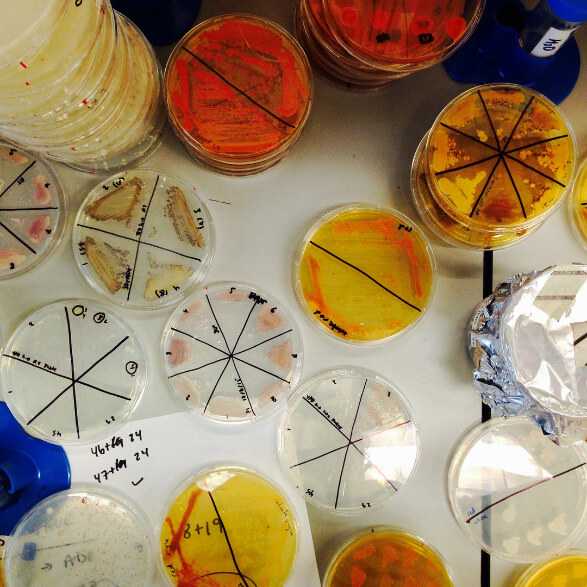
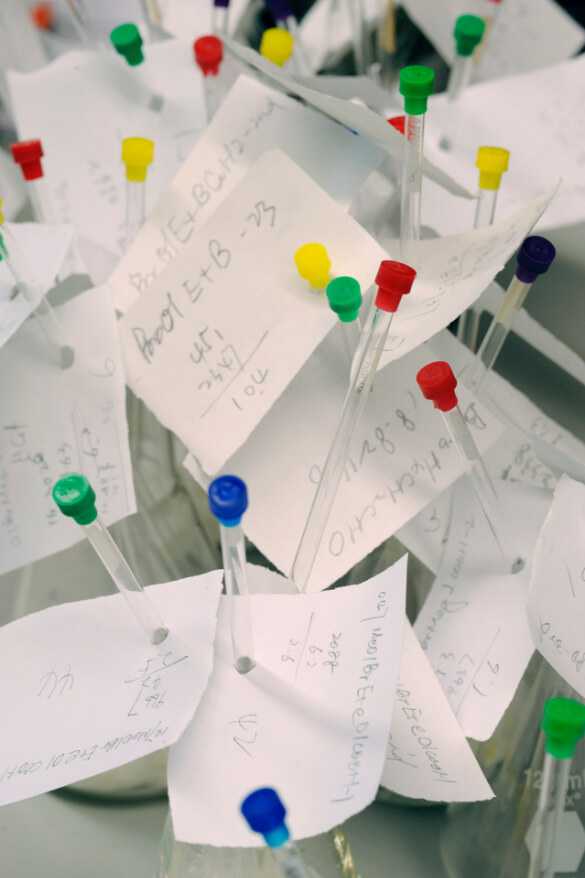
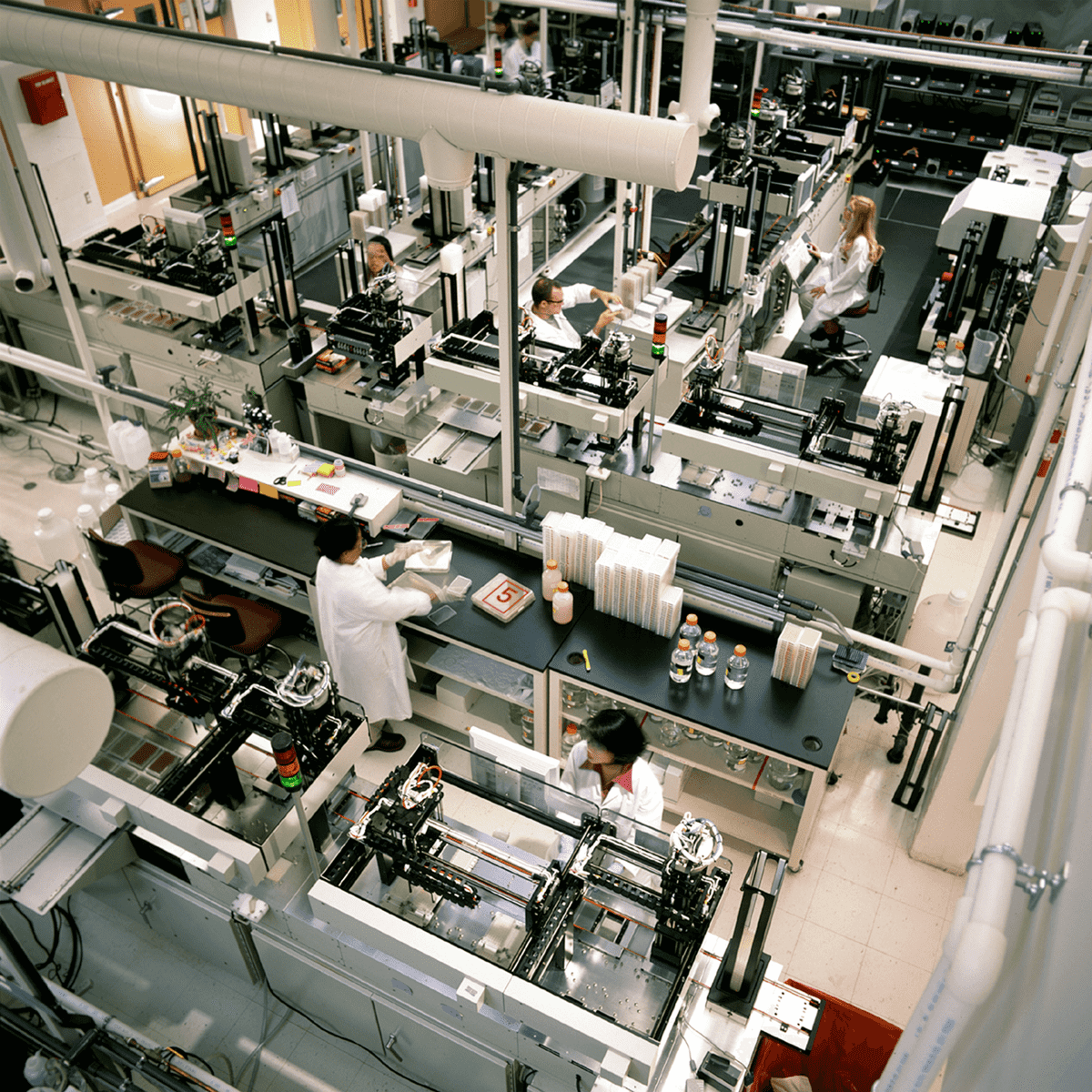
The Broad Medical Research Program
In 2001 The Broad Foundation established the Broad Medical Research Program (BMRP), creating both a scientific advisory board and a review board to evaluate grant proposals. As someone who always seemed to gravitate toward the new and untried, Eli designed BMRP to award grants to scientists whose experimental work was not yet receiving funds through traditional means. With international collaboration, BMRP gave $44.1 million for nearly 400 projects for pilot research. In 2013, BMRP merged with the Crohn’s & Colitis Foundation of America and continues to grant early career scientists and unconventional approaches to understanding IBD.
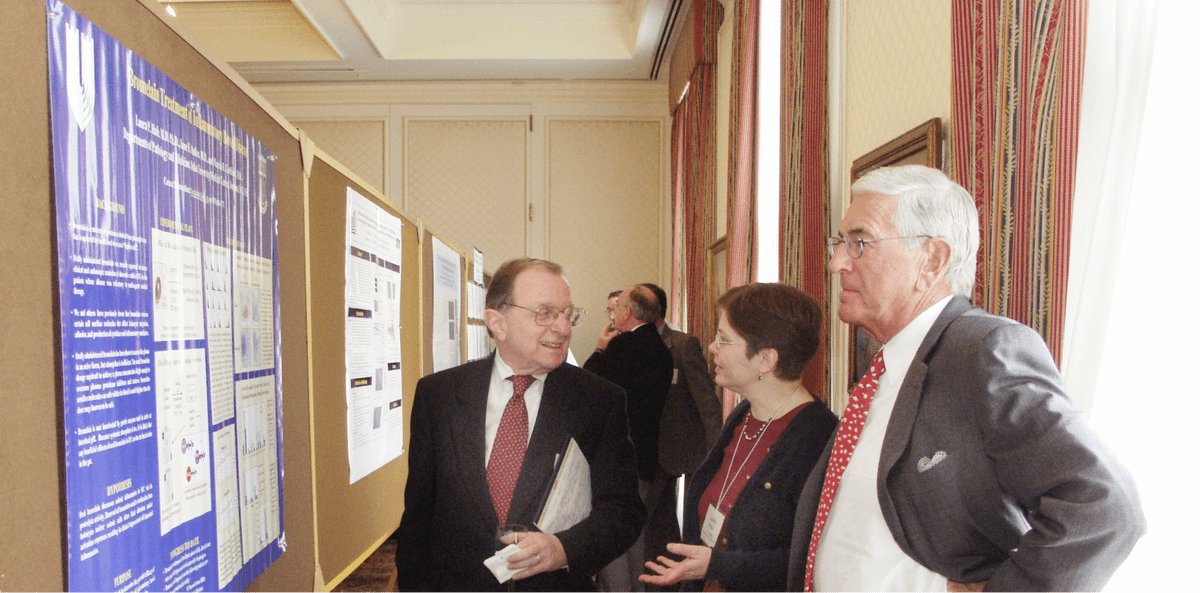
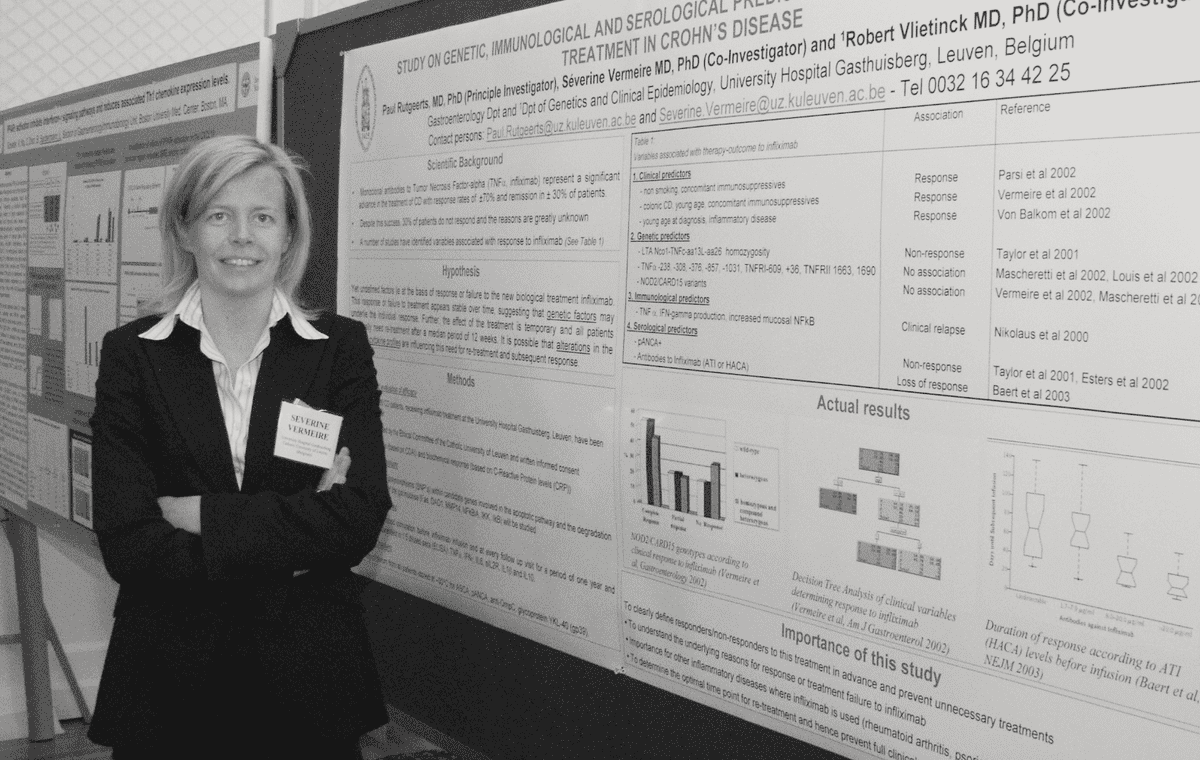
Presentation at a BMRP meeting
How A Collaborative “Experiment” Became the Broad Institute, a World-Class Genomics Hub of Innovation
One early BMRP grantee was Dr. Eric Lander who was using haplotype mapping to identify the key gene on Chromosome 5 that causes Crohn’s. Eric had been referred to Eli by Dr. David Baltimore, president of the California Institute of Technology, where Eli served on the Board. “[Eric] is on the trail of the gene for early onset Crohn’s disease,” David wrote to Eli. “He has no funding [and is] bootlegging it as often happens in early-stage research.” Years later, Eli and Edye were in Boston for Eli’s induction ceremony at the American Academy of Arts and Sciences, and they paid a visit to the Whitehead/MIT Center for Genome Research where Eric and his colleagues were finishing the Human Genome Project. The Broads were struck by the enthusiasm of the MIT and Harvard scientists who were so energized by their research they were working on a Saturday.
His entrepreneurial spirit piqued, Eli asked Eric how much was needed to take the findings from the Human Genome Project and translate the research into meaningful biomedical progress against disease. Eric responded with a suggestion of $800 million, and the Broads headed back to L.A. with a “good luck” and an offer to stay in touch. But the Broads believed in Eric and the merits of his work and vision so, about a year later, Eli reached out with an idea: what if The Broad Foundation offered to partner with Eric’s neighbors at Harvard and MIT to kickstart the project? If the other two came to the table, the Foundation would contribute $100 million in unrestricted funds over the next five years. In a now legendary meeting, Eli convened at the Harvard Faculty Club the presidents and provosts of Harvard and MIT at the time. A meeting (and a story) later, they agreed to embark on this experiment together.
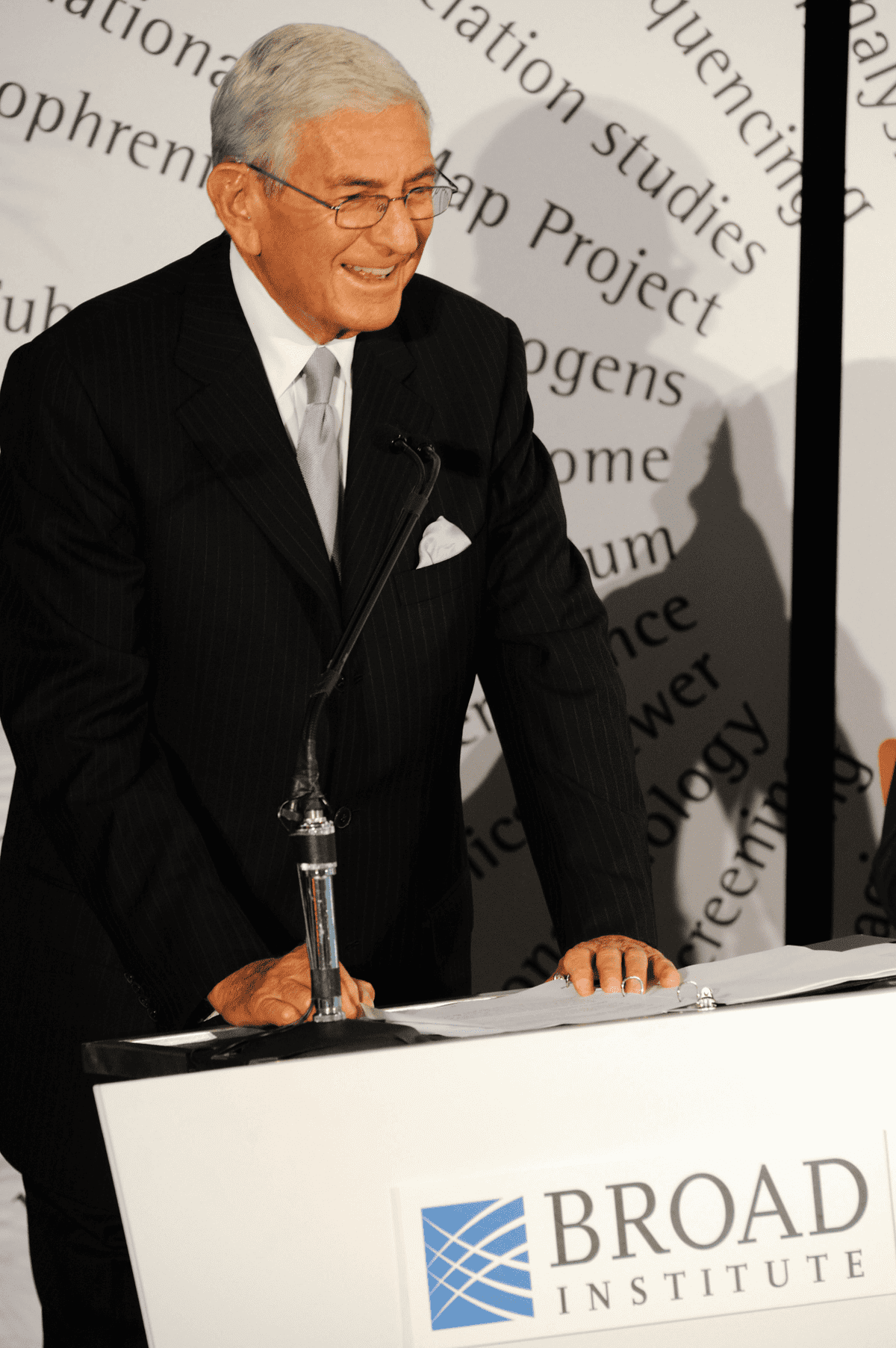
Eli speaks at an event at the Broad Institute, 2008
—Larry Summers, Former U.S. Secretary of the Treasury (PUBLISHED IN THE ELI AND EDYTHE BROAD FOUNDATION: 50 YEARS OF GIVING)
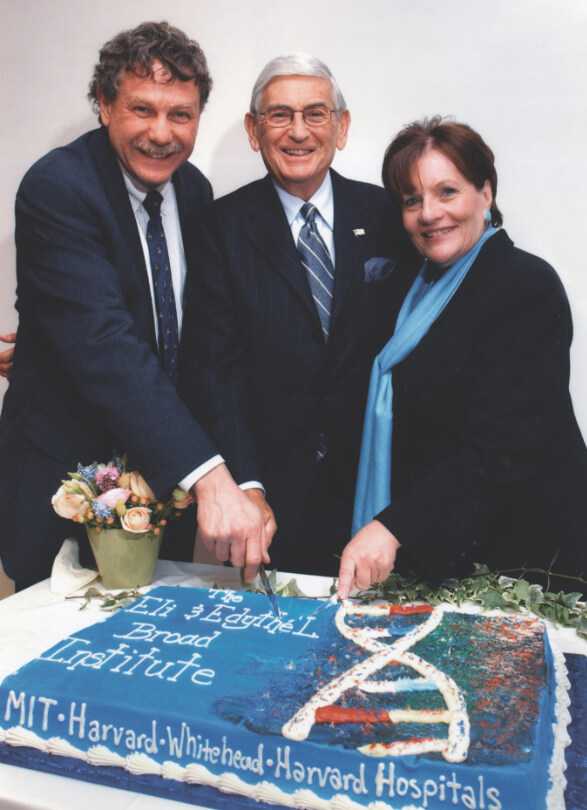
In 2004, the Broad Institute of MIT and Harvard opened its doors as a novel and experimental approach to biomedical research, bringing together esteemed scientists with multi-disciplinary faculty and students from leading academic institutions and research hospitals. Together, they made their findings, biological tools and the vast amounts of their research data, freely available to the global scientific community—always for the public good. To date, The Broad Foundation has committed over $1 billion in unrestricted funding, which has enabled the Broad Institute to thrive and pursue innovative approaches to biomedical research, including new genome analysis and sequencing techniques.
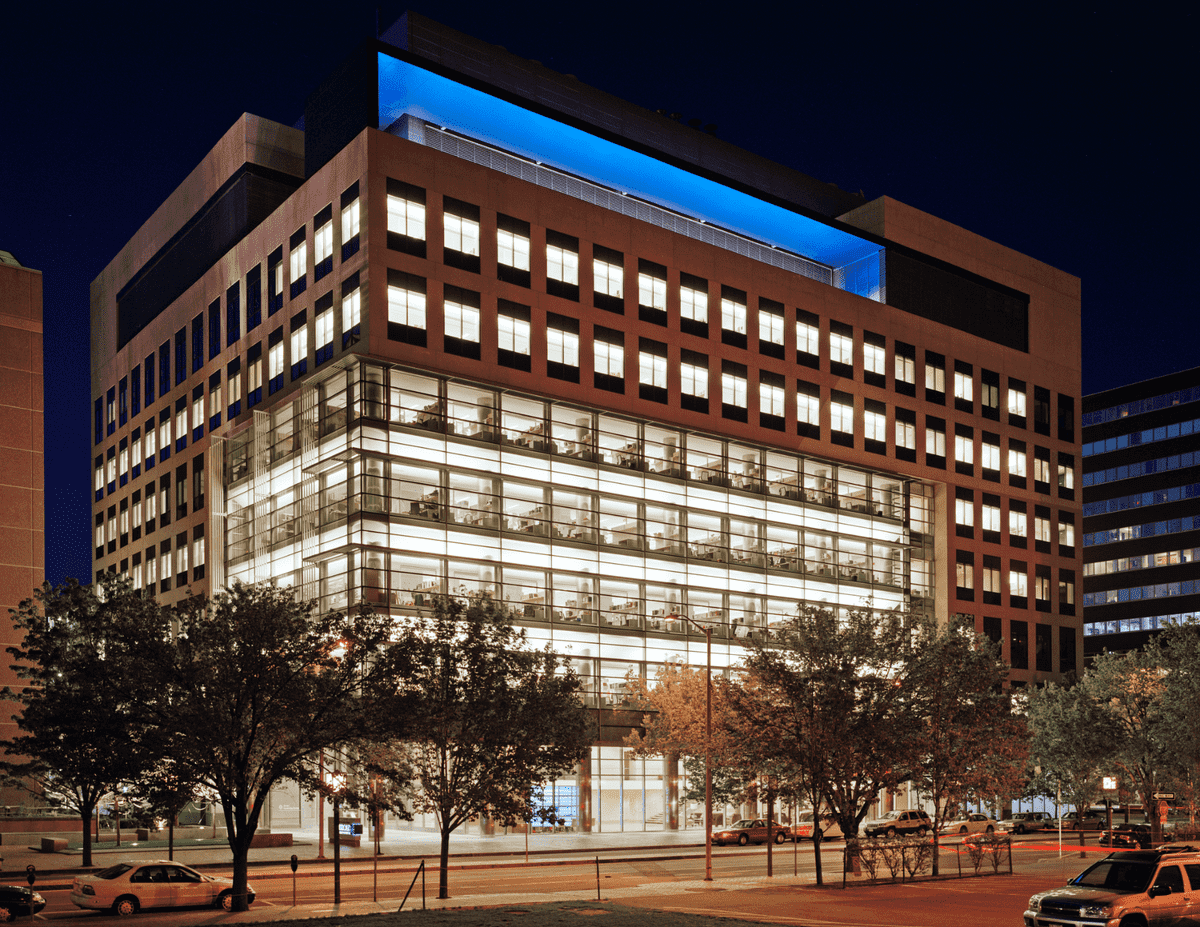
Exterior of Broad Institute in Cambridge, Massachusetts. Photography by Lance Hayashida
A New Home for Biology: The Broad Center for Biological Sciences at Caltech
As a longstanding trustee of the California Institute of Technology (Caltech) since 1993, Eli believed the 21st century would be the golden age for biology and that Caltech’s scientists would be at the forefront of groundbreaking discovery and innovation. In September 2002, Caltech dedicated the new Broad Center for the Biological Sciences, with principal funding provided by the Foundation with a gift of more than $20 million. The gift would not only create a new, more interdisciplinary home for biology and foster more interaction between science labs, it would also bring contemporary architecture to the Caltech campus for the first time.
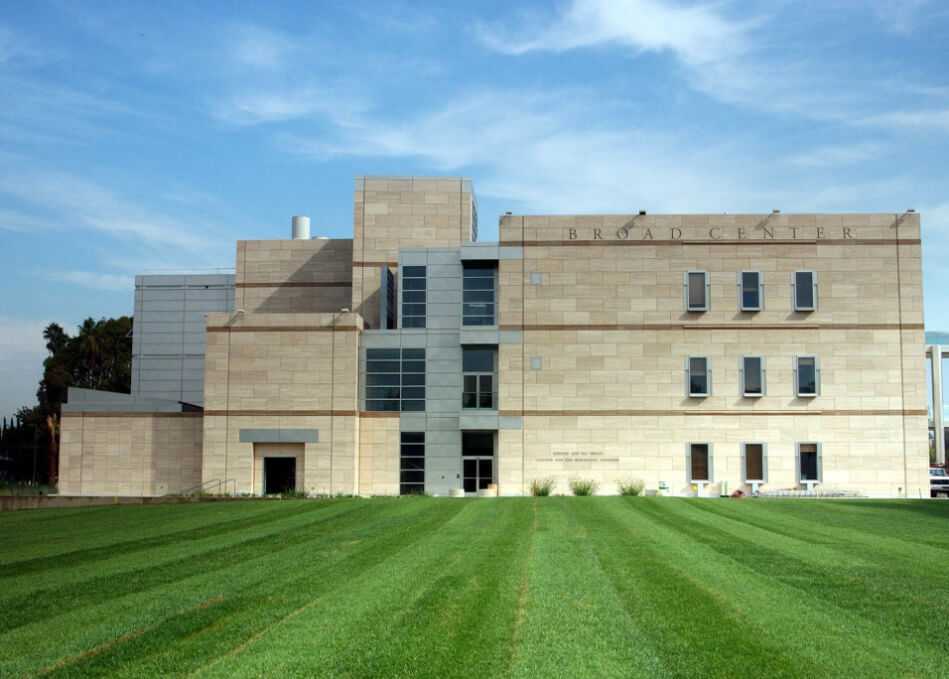
Today, the Broad Center houses the university’s division of biology and biological engineering, with specific areas of study in magnetic imaging, computational molecular biology and the investigation of the biological nature of consciousness, emotion and perception.
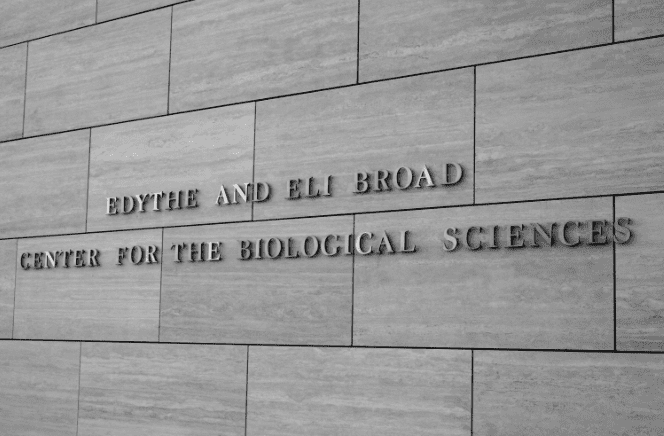
The Edythe and Eli Broad Center for Biological Sciences at Caltech in Pasadena, California
Eli Broad in a news statement at the Broad Center’s opening at Caltech
Frontiers in Medicine: Investments in Stem Cell Research Centers
In 2006, when President George W. Bush vetoed a bill that would have supported federal funding of stem cell research, Eli took immediate action. Recognizing that California’s growing stem cell research and treatment infrastructure could hold the key to critical diseases and conditions, The Broad Foundation made an initial investment of $65 million to create stem cell research centers at the University of California, Los Angeles (UCLA), the University of California, San Francisco (UCSF) and the University of Southern California (USC).
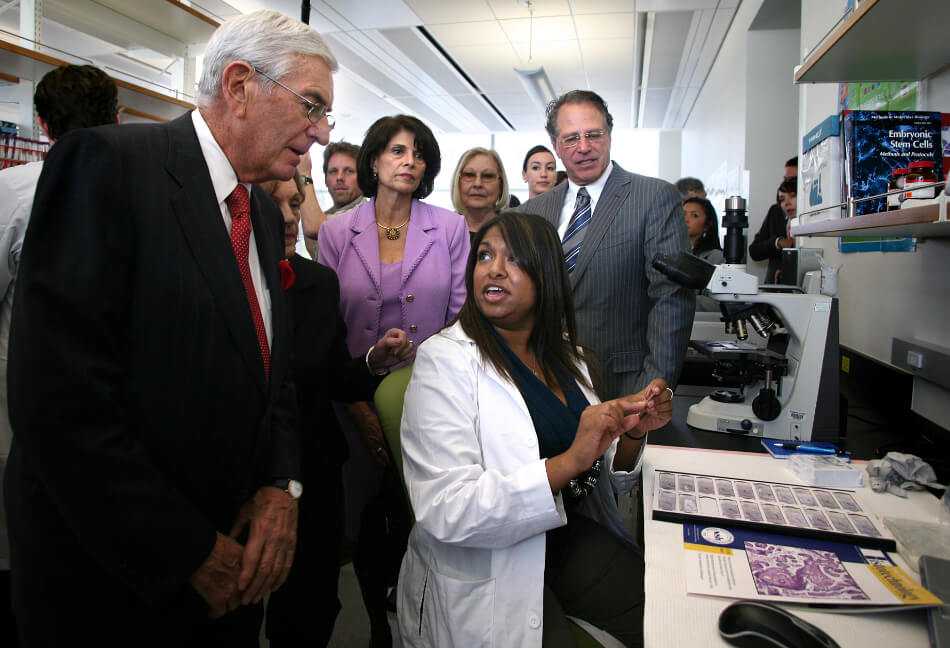

The Foundation continued to support the Centers over the years and, in June 2019, made additional gifts to the three universities totaling $30 million to fund innovative research, faculty recruitment, training and retention at the stem cell research centers, bringing the Foundation’s total support of stem cell research in California to $113 million since 2005.

